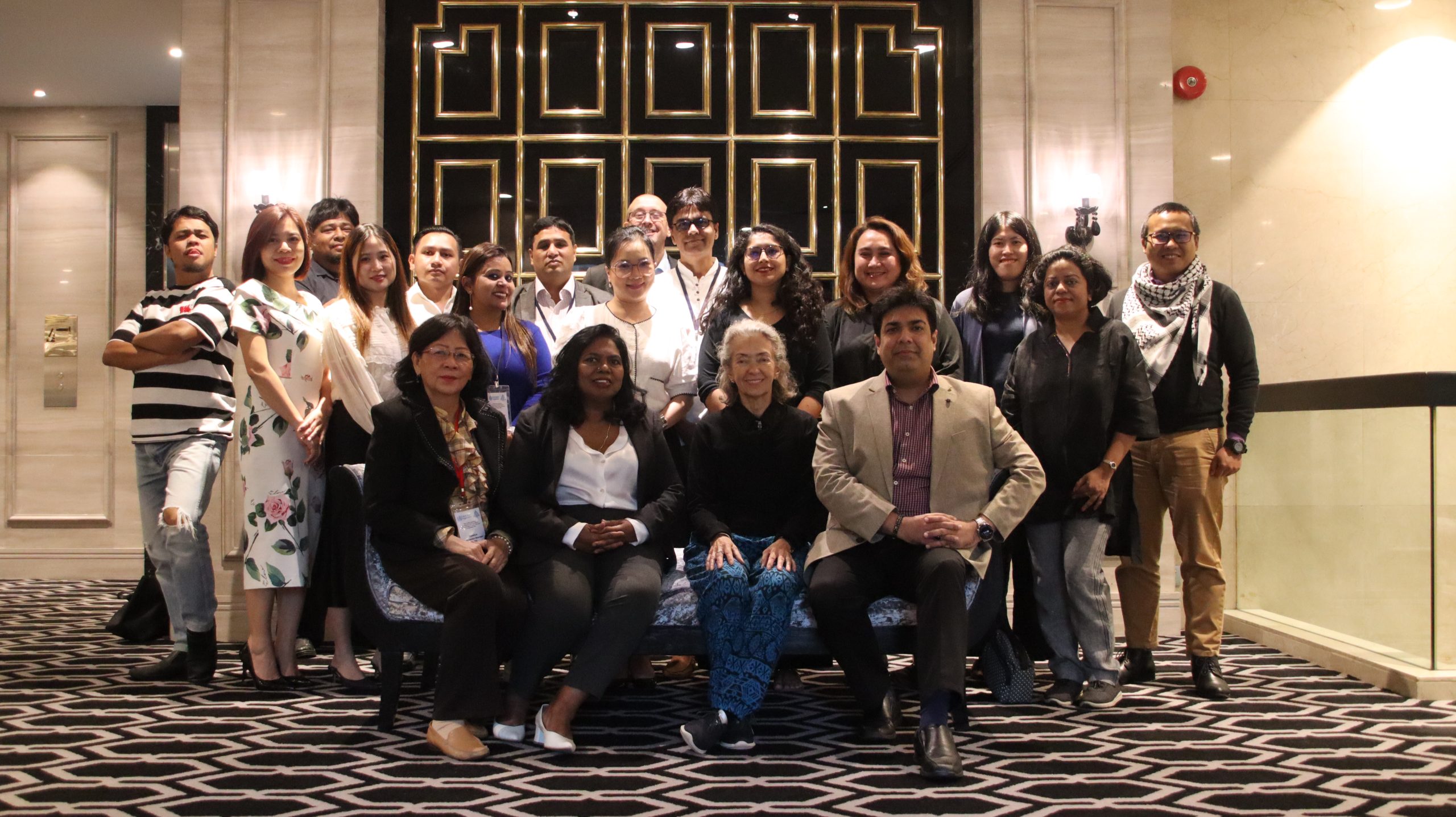
Day 1 – Road Safety Reporting: Workshop for Asian Journalists
The AIBD/WHO Road Safety Reporting Workshop for 16 Asian Journalists took place in Kuala Lumpur on 6th November 2022. These journalists are from Bangladesh, India, Malaysia and Vietnam. It is part of the World Health Organisation “Road Safety Reporting Initiative”, aiming to help journalists tell more and better stories that help reduce fatalities from crashes. The 3-day workshop also ties in to AIBD’s effort to focus on developmental journalism, where journalists should report on complex developmental challenges and other solutions.

Professor of Transport Planning, Department of Civil Engineering, Indian Institute of Technology, Ms Geetam Tiwari says new research is required to make cities safer for pedestrians in all countries. She reiterated that there is a need to re-visit current speed limits (presence of elderly pedestrians), lower speed limits and active measures to control speed.
Sharing a session remotely from India on “safe systems approach”, Ms Geetam cites three principles which need to be taken into consideration while designating bus stop for pedestrians to reduce risks for people approaching the bus stop. The 3 principles are safe locations of bus stop; urban areas to designate the bus stop and waiting areas for pedestrians who are fond of taking the shorter path to the bus stop.
Journalist and Media Trainer from the United States of America (USA), Ms Deborah Potter shared on the topic of Solutions Journalism on Road Safety. She describes that Solutions Journalism as features a response to a problem; provides insights into how it works right now; includes evidences of results not just intention; discussion limitations and avoid hype. He discloses that motorcycle manufacturers will be given special incentives such as training programme for installing the ABS and new technology to their new models of motorcycles.
A journalist and media trainer from Uruguay, South Africa, Ms Mercedes Sayagues says data is power and only with accurate data, accurate solutions and relevant strategies can be formulated. She was sharing a topic on “finding road safety data” and advised the workshop participants to source all relevant data from reliable sources like WHO, the government and the relevant authorities to harmonise the data collections efforts. Malaysia and Thailand have done with an impressive efforts in line with WHO’s guidelines in order to pool their resources and improve data collection.
Sharing virtually from Thailand is the Director of Injury Prevention Division, Department of Disease Control, Ministry of Public Health, Dr Sirirat Suwanrit who also disclosed that motorcycles are the largest contributor of road fatalities in Thailand, accounting for 74.4 percent. She also said the Thai government target to achieve 100 percent increase proportion of motor-vehicles occupants using safety belts or standard child restraint system (CRS) by 2030.
Senior Researcher, MIROS, Ms Sharifah Allyanna, sharing her talk on Data Issues – The Malaysian Experience disclosed that for the past 10 years, more than 60 percent of road fatalities are motorcyclists, followed by passenger cars and pedestrians. She said the government has taken various initiatives by launching the Malaysia Road Safety Plan 2022-2030 with the aims of reducing the numbers of road fatalities by 50 percent in 2030.
Executive Director Safe Kids Malaysia, Department of Community Health, Facility of Medicine and Health Sciences, University Putra Malaysia (UPM), Professor Dr Kulanthayan K.C. Mani says public transport is the safest compared to any kinds of vehicles. Sharing a session on the topic “Protecting the Most Vulnerable”, he said Malaysia passed a new law on Child Restraint System (CRS) in 2020, but has yet to be enforced.
Professor Dr Kulan Mani also touched on Children has six limitations under the age of 8. These limitations are vision, hearing, unable to identity moving vehicle, misunderstanding vehicle can see them, misunderstanding vehicles can stop immediately and misunderstanding vehicle would not harm them.






